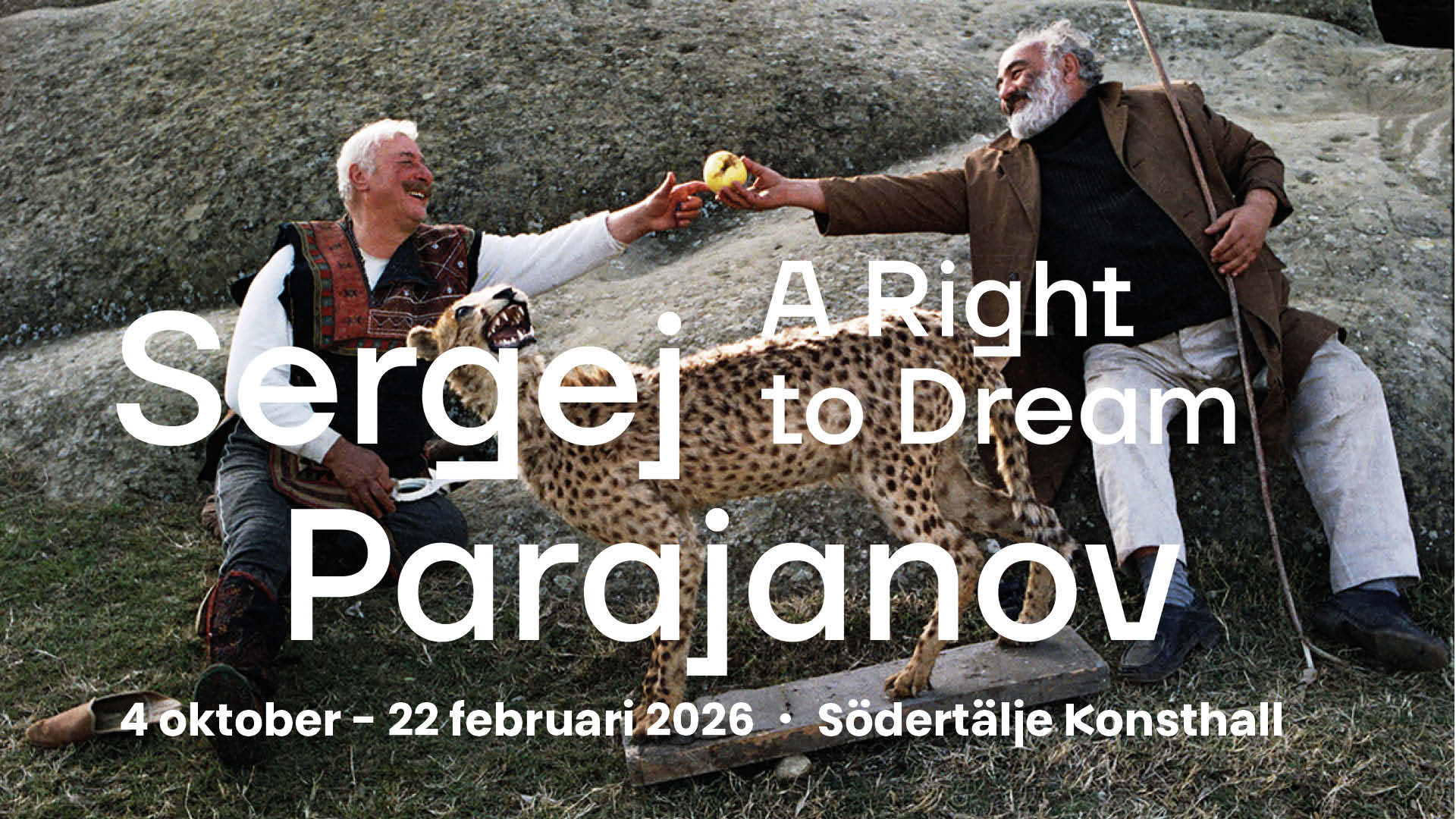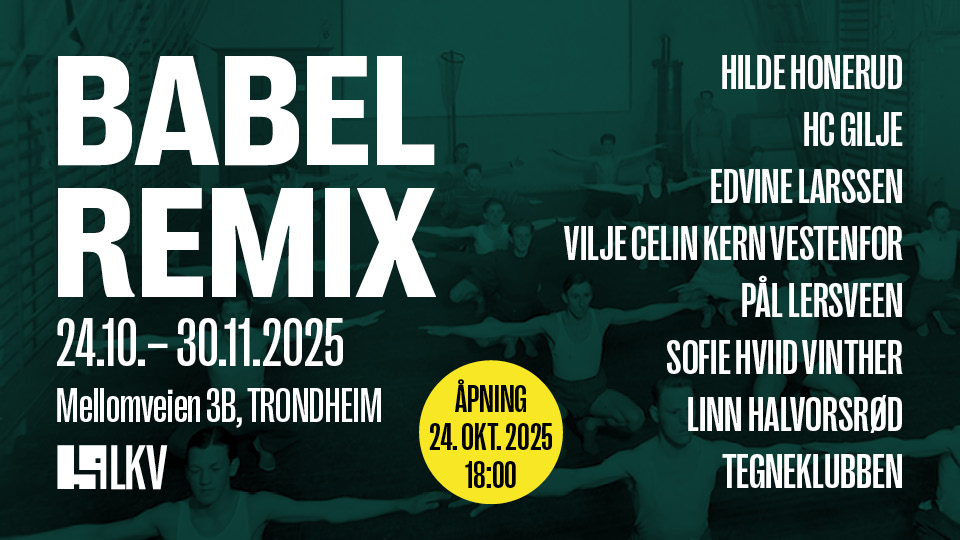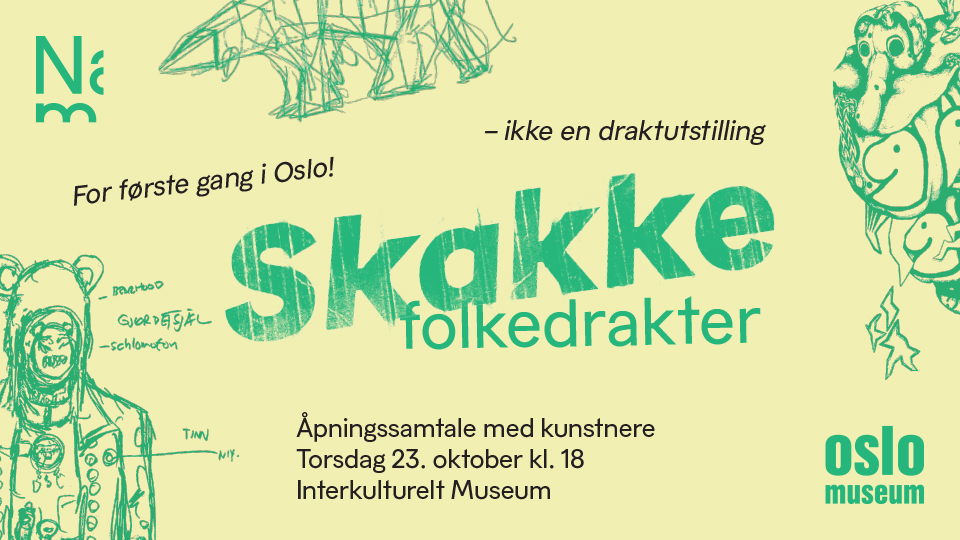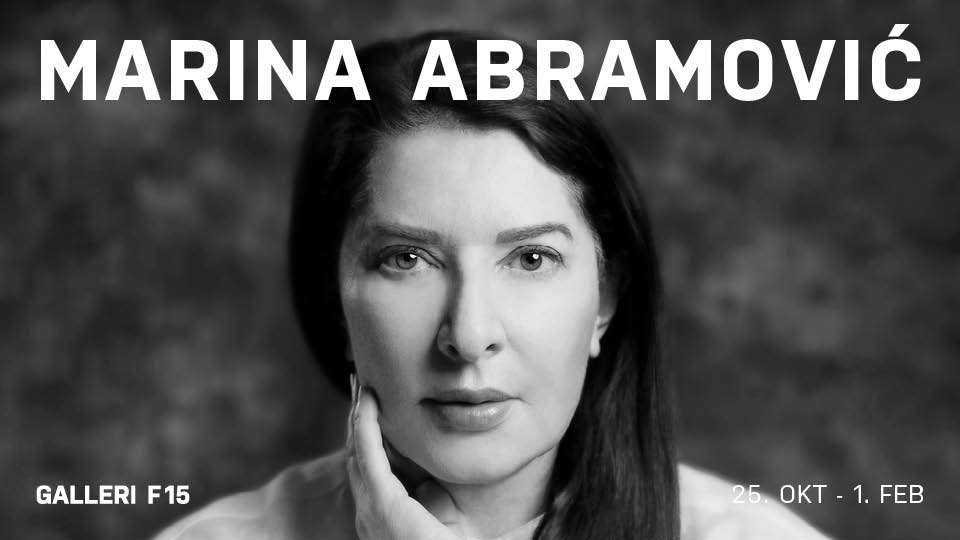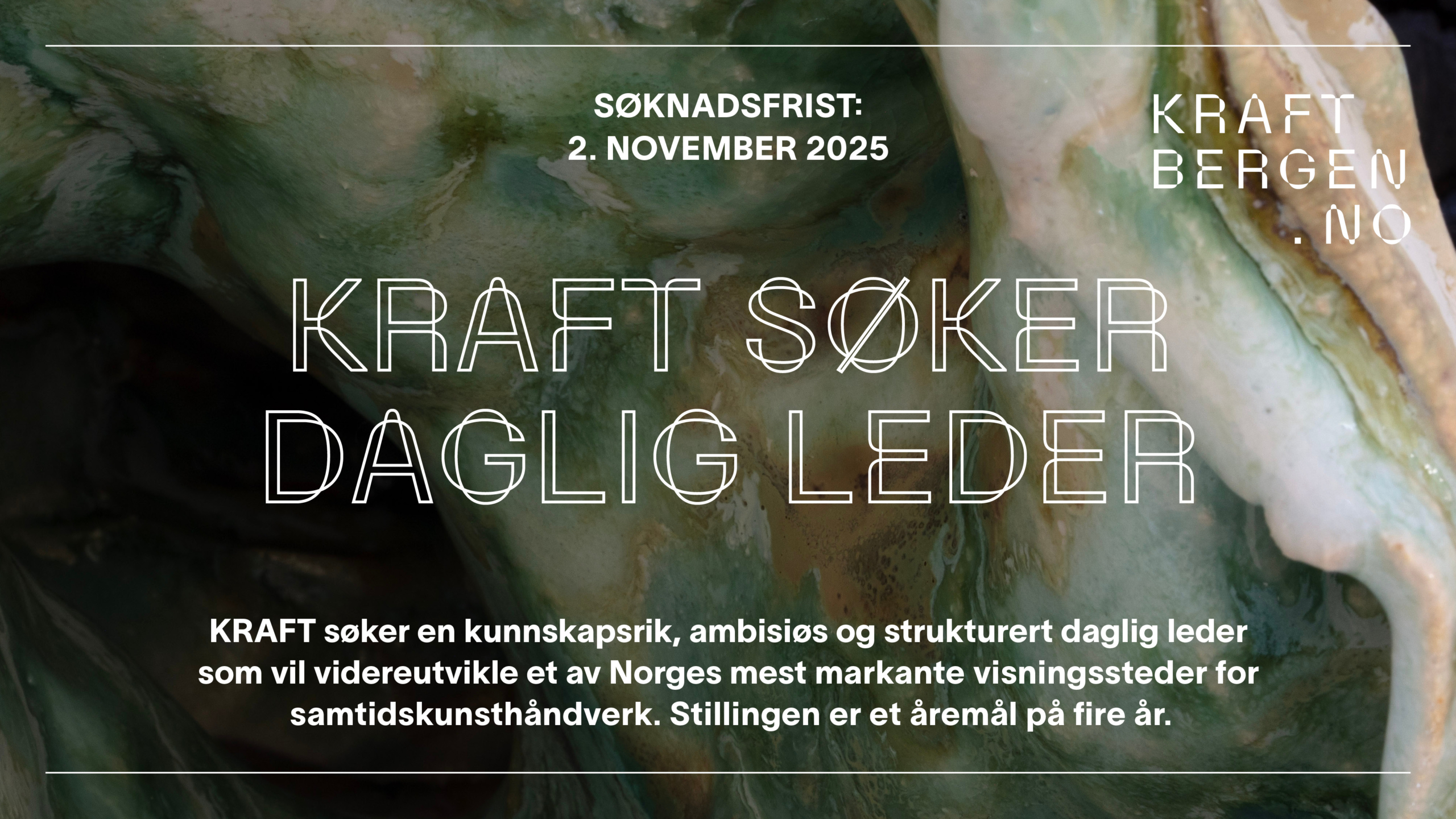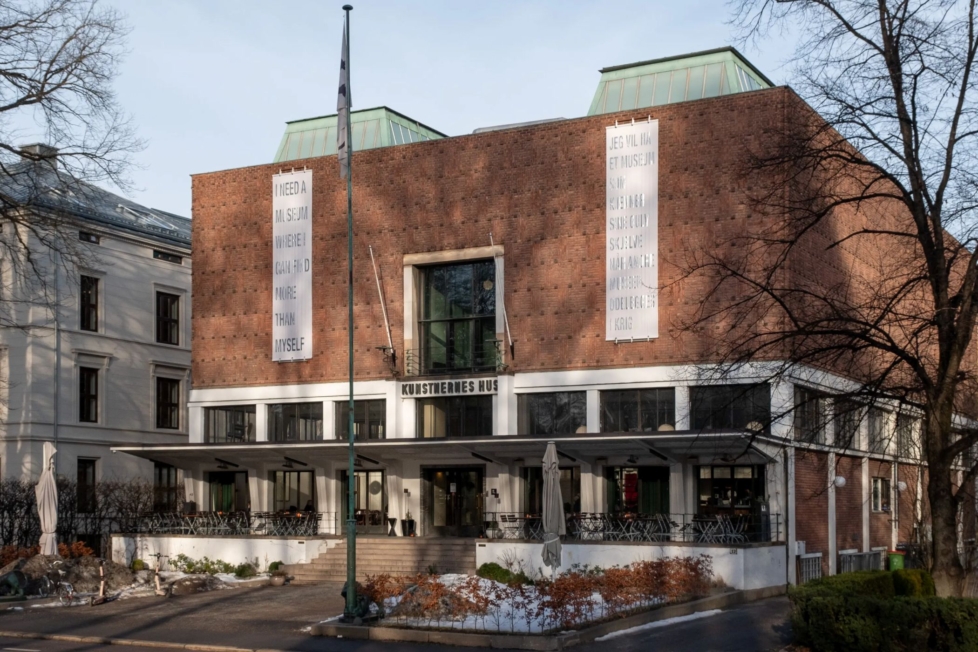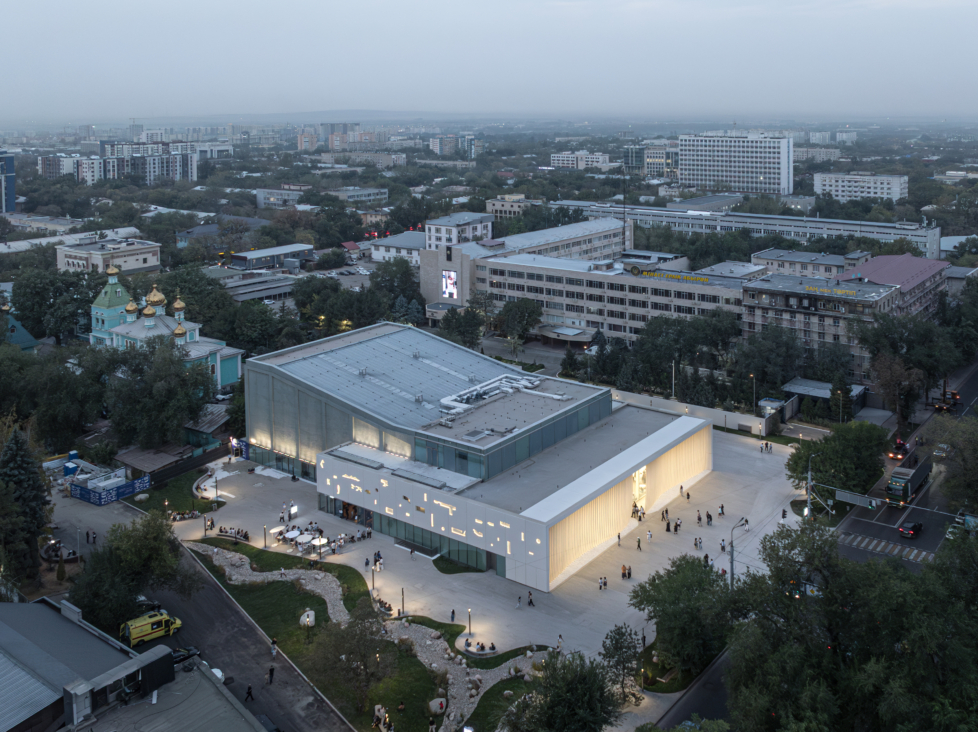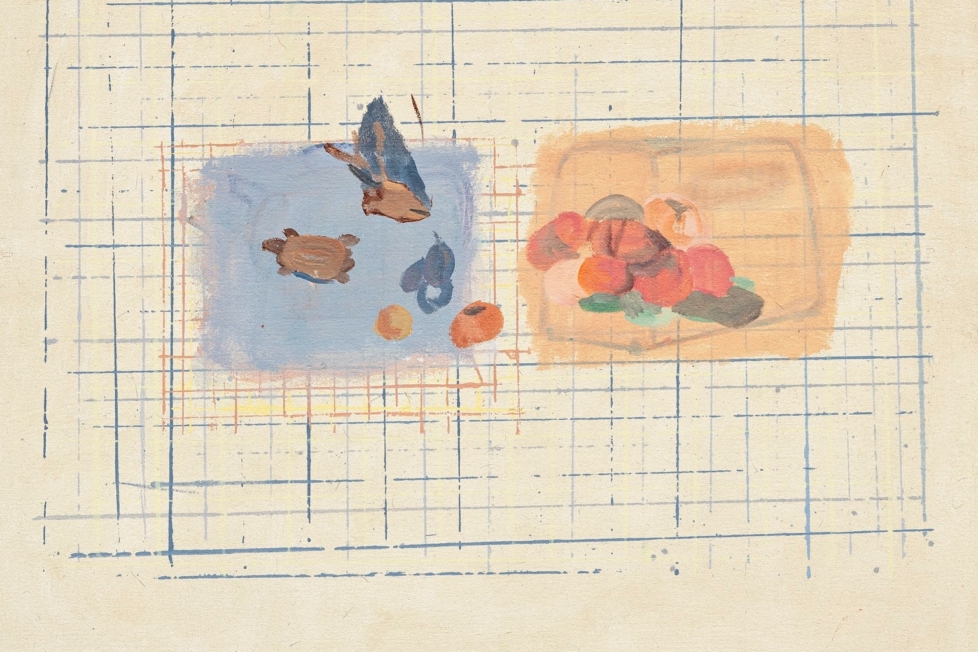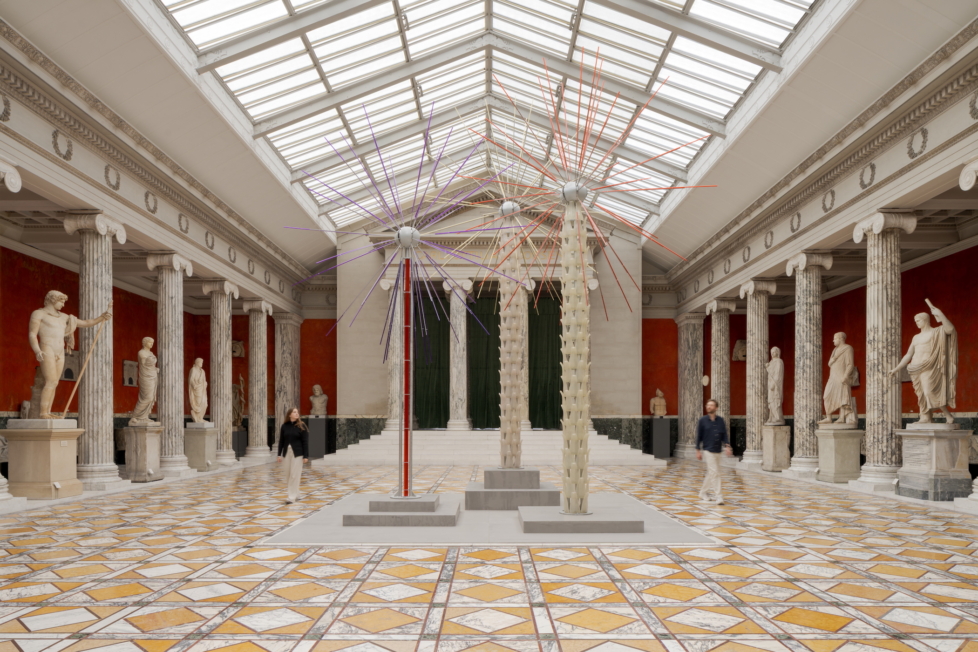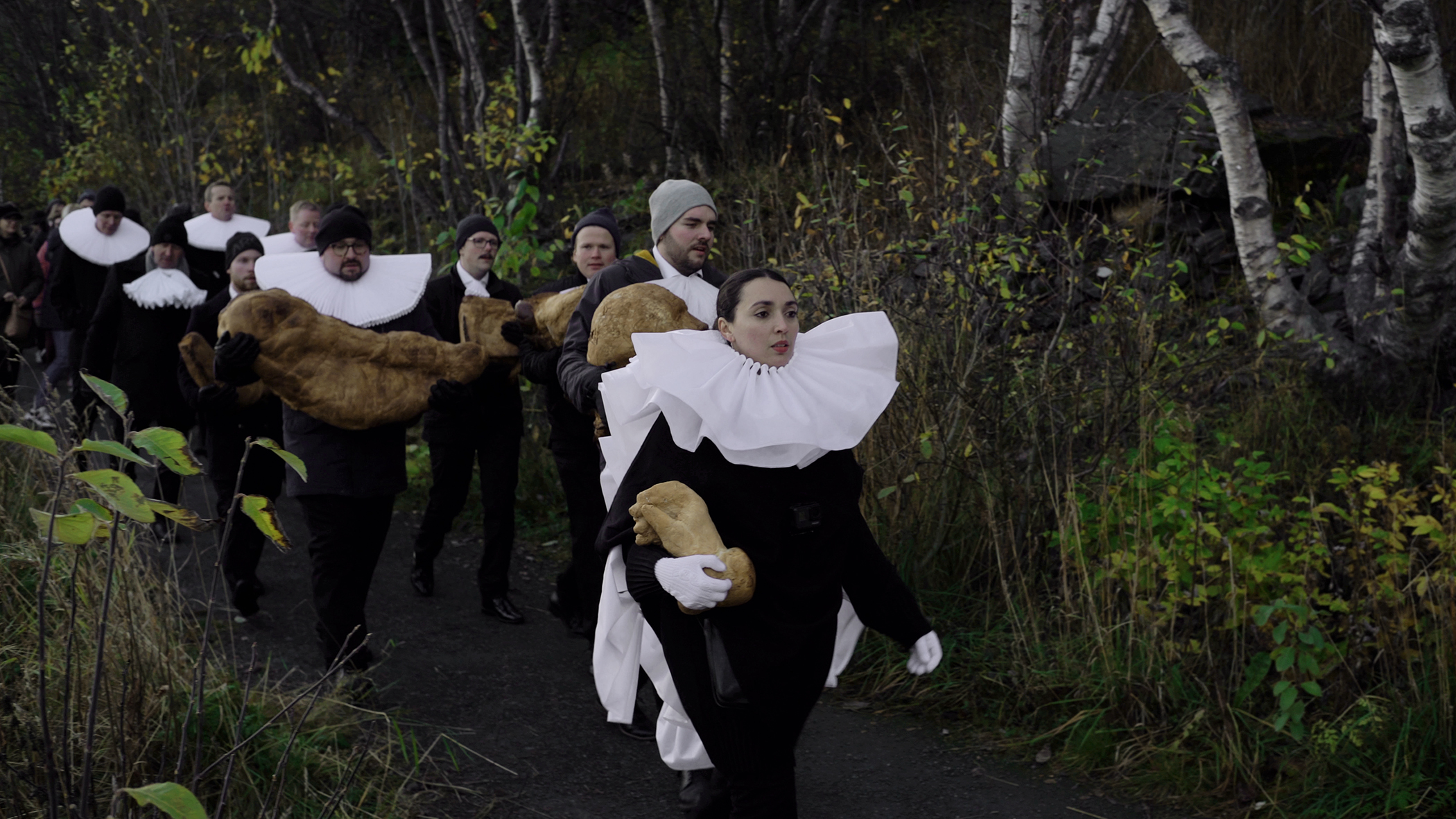
On 3 July 1721 – that is, almost exactly three hundred years ago – the Norwegian-Danish priest Hans Egede (1686–1758) landed in Nuuk and began the process of Christianising and colonising Kalaallit Nunaat, also known as Greenland. Inuit religion and cultural modes of expression such as mask dances, drumming, throat singing, and tattoos were banned, and in his writings Egede describes how he not only whipped Inuit shamans who would not convert, but also threatened and punished women and children. His view of the Inuit was obviously racist, and he claimed that they had to be “made human” before they could become Christians.
The performance This Is Our Body, enacted during the Arctic Moving Image & Film Festival in Harstad on 15 October, was an artistic processing of this problematic tricentennial. When Oslo-based artist Hanan Benammar, primarily known as one of the creators of the play Ways of Seeing (2018), was invited to take part in the festival, she decided to do a project about Egede, who was born in Harstad. She began by allying herself with the Greenlandic musician Aqqalu Berthelsen, also known as Uyarakq. He has long been among those who want to remove the statues of Egede – of which there are five, in Nuuk, Harstad, Vågan, Oslo, and Copenhagen, respectively. In 2020, when the statue in Nuuk was equipped with a whip and modified with red paint, Inuit signs, and the inscription “decolonise,” it was Berthelsen who conveyed the message from those responsible to the general public.
Benammar’s project gradually grew into a large collective work which also involved the Canadian-Inuit throat singer Cynthia Pitsiulak, the Harstad-based choir Bel Chorus, the organist Maria Daniela Rasch, costume designer Parnuuna Kristiane Thornwood, and one of Egede’s descendants, Hans-Henrik Egede-Nissen. The performance that arose from this collaboration was a mixture of theatre, concert, mass, and ritual, beginning with a slow procession along Harstad’s coastline leading up to the Trondenes church. The procession was led by Benammar and the choir, dressed in black and wearing various varieties of the ruff collar traditionally worn by protestant clergy, chanting and carrying parts of Hans Egede’s body – head, legs, and arms – in the form of sculptures made out of bread. The public was invited to follow, and a long line of people ended up walking along the beautiful coastline at sunset.
Once inside the church, the bread sculptures were laid at the feet of Pitsiulak, who was ceremonially seated in the aisle like a priestess. The local priest, Arne Håkonseth, appeared with a dish of seal meat, but did not give a sermon. Before disappearing again, he uttered the phrase “Give us this day our daily seal,” Egede’s local adaptation of “Give us this day our daily bread” from the Lord’s Prayer. The priest gave the seal meat to Berthelsen, also donning a black coat and ruff for the occasion, who put it in a microwave oven to cook – one of several comic touches in the proceedings. From there, a veritable takeover of the church was carried out, enacted through Pitsiulak’s powerful throat singing and Berthelsen’s electronica, which included deep bass passages and samples of Christian music played backwards. If Christian missionaries branded throat singing as demonic, then Berthelsen ramped up the subversive mood with a classic ‘satanic’ trope commonly found in heavy metal music. This was combined with elements of traditional church music performed by the choir and organist, as well as fragments of the Norwegian singer Geirr Lystrup’s critical song ‘Mrs. Rask and Hans Egede’ (1979).

Wearing a ridiculously large, many-layered ruff, Benammar represented the generations of Egede’s descendants and read aloud a letter from Egede-Nissen that partly criticised his forefather, but also argued for the statues to be kept in place. The letter was contrasted by sudden exclamations of profanities and nonsense from the choir, which had the last word with the old Christian expression “Christ on a bike” and a fragment of the chorus “Bicycle! Bicycle! Bicycle!” from the Queen song ‘Bicycle Race’ (1978).
The performance concluded down by the beach outside the church. The choir carried out Egede’s bread-body parts and gave them, one by one, to Berthelsen, who took them down to the water’s edge. There he handed them over to a person in a kayak who paddled some distance out on the water and gently sent the parts floating. Egede was baptised in the Trondenes church, and, following the performance of This Is Our Body, we might say that he has also been ritually buried at sea outside. Presumably, he ended up as food for fish or seagulls.
It is tempting to think of this performance as a kind of artistic exorcism, a cleansing of the church and its surrounding area. But we can also see it as a collective processing of the past comprising a range of different cultural traditions and involving participants from the Inuit community and the local community in Harstad. Not least, it can be seen as a contribution to the discussions about decolonisation that have intensified recently, especially after the Black Lives Matter movement became global following the murder of George Floyd in the spring of 2020. How should we relate to colonial history and the colonial structures that very much remain in play, in old and new forms alike? And what are we going to do with the statues, the colonisers on the pedestals?

Things are getting worse because it’s getting better
The day after the performance, Benammar and Berthelsen took part in a panel discussion with artist Anders Eiebakke, who contributed the video work The Park (2020) to the festival, and with the festival’s curator Kristian Skylstad. The conversation revolved around the festival theme, “The New World,” but also touched upon our relationship to history and the recent statue debates, and there seemed to be consensus not only in the panel, but also among the audience that the Egede statues should be taken down.
“The statues are a terrible way to tell history,” Berthelsen stated. “History has been told through white supremacy.” However, he expressed optimism on behalf of the Inuit community: “We are getting our land back. At some point, we will get it all back. The world is getting there.”
Benammar agreed. “Things are getting worse because it’s getting better.” she said. “Many more voices are heard than before, and therefore there has also been a huge backlash. These things are not supposed to be easy. I never learned so much history as in the last two years.”
According to Berthelsen, “white people think ʻcancel cultureʼ is a new thing.” He then added: “It always happened to brown people, but it’s only now that it’s happening to white people that they call it cancel culture. It’s only new for white people.”

Benammar said the Egede-project was incredibly complex to work with, and that it had been a pretty intense experience. “It’s a challenging space to enter – coming to a city that is not mine, having no relation to Greenland,” she said. But being a French-Algerian herself, she stressed that she knows something about colonialism. “The patterns are the same, so I can relate. There are many of the same feelings, and the aspect of not knowing what you have lost.”
Decolonisation in practice
After the panel discussion, I asked Benammar, Berthelsen, and Pitsiulak to elaborate their views on the performance and the colonial issues it addresses.
Mariann Enge: It seems the 300th anniversary of Egede’s arrival in Greenland has not been given much critical attention this year?
Aqqalu Berthelsen: I didn’t find a channel to do anything until now. I’m happy with how it turned out because this is kind of what I envisioned I would do this year.
ME: After Egede’s statue in Nuuk was defaced in 2020, there was a referendum where it was decided to keep it…
AB: It’s all boomers! [Laughter] There’s a generational divide in Greenland at the moment. Most young people want it down, while the older people, I think they’re afraid of change. They see Egede as the saviour of our culture, of our language. Christianity among the older generation is very strong. Most of the younger generation are atheist.
Inuit have knowledge systems, like storytelling, which got disrupted by the missionaries. For instance, we don’t have the Greenlandic kind of throat singing today. But we have some cultural workers who work with Nunavut Inuit who do throat singing, and it’s slowly coming back. I believe it’s going to be a thing again.

ME: I’m aware that throat singing was banned in Canada as well. I guess keeping it alive required some activism?
Cynthia Pitsiulak: I bought a throat singing CD when I was about 17 years old, I would listen to it all the time and practice how to make the sounds. I was able to learn as much as I could by looking absolutely everywhere for other Inuit throat singers. When I first started learning around eighteen years ago, there weren’t many throat singers; they were harder to find. I would ask other Inuit women and if I found someone who knew how to throat sing, I would learn as much as I could from them – and then I would teach my singing partner, who was also learning at the same time as me. She would do the same thing: she would learn as much as she could from other singers, and then she would teach me. We exchanged a lot of songs that we learned. Even though I’ve been learning this ancient form of singing for almost twenty years, I’m still learning a lot to this day.
ME: How did you feel about the performance?
CP: I felt it was powerful, for me and for others. That’s one of my favourite things about performing, I could feel the energy from the audience. And I could feel the energy coming out from myself.
ME: This Is Our Body was clearly a critical performance, but it also reminded me of some kind of healing ritual.
Hanan Benammar: Yes, that was the purpose. There are references in the performance that are maybe not very clear to people, but you can feel it. Trondenes church has these Catholic artefacts. When I started to think about working with the statue as an object and copying it in bread, we had to focus on the extremities of the statue. Then it reminded me of the tradition of anatomic ex-votos in the Catholic church, which goes back to antiquity and I think originally comes from mediterranean polytheism. When people had pain in their bodies, they made copies of the affected body parts, sometimes in the scale of the body, and brought it to the church for healing.

I’m interested in the practical aspect of decolonisation, all of the things we are trying to do. I wanted to bring Egede back to the sea. And I wanted the choir to really embrace him. I told them to handle the bread sculptures as though they were carrying a person, like a child or something, like they cared about it. To have the body against their body.
The low frequencies and infrasound, the base in Aqqalu’s music, and also the throat singing, remind me of healing sounds. It’s interesting in terms of what calms you, what relaxes your body. Sounds can say a lot without articulating words. When it’s sound, you become helpless, in a way, because it’s unstoppable unless you leave the room. I think healing processes play a big part in decolonial strategies.
ME: Speaking of the body – it has of course been subject to a lot of shame in Christianity in general.
HB: Yes. And it’s a paradox, because it’s all centred around the concept of transubstantiation and the body of Christ. And I like this paradox: you have in one way the shame of the body, the actual physical and sensual aspects of it, and at the same time it’s centred around the body of Christ.
Trondenes church is a very interesting place. There’s a bit of a cursed feeling and at the same time it is very soft as well. It’s a small church. But when you start to understand a bit of the history of the church, it’s disturbing. Something that really shook me was the aspect of all the bodies of the Soviet soldiers that have been taken away. The field that we crossed at the end of the performance is were the cemetery was. The bodies were removed. And then there are the bodies in the basement of the church from the 17th century, the time of Egede. It was believed that by having the bodies in the church, they would be closer to God and to paradise.

HB: What if we take all of those bodies, and make them ours – and, of course, also the body of the last witch to be burned in Norway, sentenced by Egede’s father – trying to understand the level of brutality of the time. The level of trauma is quite high. I tried to connect with traumas here, somehow. After all, history is collective. Trauma is collective and it lives on in our bodies. Generational trauma is very interesting, it’s in the unspoken.
When Frantz Fanon came to Algeria and worked there as a doctor and a psychoanalyst, it was about these things, you know. I think these are going to be important discussions again.
ME: You also included a relative of Hans Egede in the performance.
HB: Yes, Hans-Henrik Egede-Nissen is a direct descendent. In Greenland, several people were called Egede, but that’s only because they were baptised by someone in Egede’s family.
AB: Yeah. My last name is from a missionary, Berthelsen, and he was hand picked by Hans Egede, so he directly influenced my name.
HB: I like that there are moments of ambivalence in the work. So it was interesting for me also to “be” or perform the text of Egede-Nissen. If it had been him on stage, it would have been harder, because of the dilemma to expose him to anger. I want to respect him and all of the people involved in the performance, no matter what is their standpoint. I called him and told him: “There are some of your comments that I find problematic, and I just want you to know that I respect you, but you must understand that I will have to in some way balance your text with other elements.” Which is something I did by incorporating a response from the choir.

HB: Some of the elements I found problematic in his text are that he seems to banalise colonial history and shows a lack of understanding when he says that the pain of being colonised won’t disappear by removing a statue, which is kind of besides the point because I have never heard anyone say that tearing down statues was to remove any kind of pain. But he also ignores the agency of people living in Nuuk, and speaks about colonialism as a phenomenon located in the past. This being said, I am grateful for this collaboration because his text made the piece more challenging and more interesting to me. It created a friction from within the work which I think was necessary for things to really happen. It also challenged me on the personal level and forced me to re-evaluate my methodology and what I wanted to achieve with this piece.
ME: In the panel discussion, you mentioned how missionary work is intertwined with colonial history, and that Norway sent a lot of missionaries all over the world who have done a lot of missionary work very much hand in hand with colonial ambitions.
HB: Missionaries were first and foremost merchants…
AB: Merchants of death.
HB: Yes, but it’s intertwined. Egede was both a merchant and a missionary, and at that time, it was very normal. You don’t go into these adventures for the pleasure of traveling; you go for economical gain and power.
AB: The apostle of Greenland. I like the titles that they give themselves. It’s a very white people thing to do. Initially, the reason he got funded to go to Greenland was because the Dutch were whaling and making a lot of money. So Denmark wanted to do that too – to go there and extract resources. In our language, the word for white people is qallunaaq, which means “the people who shovel the shit out of the ocean.” They were extracting a lot of the sea life. Like the Dutch, the Danes were killing a lot of whales.

ME: Not respecting the balance of nature…
HB: Which brings us to the very interesting environmental discussion again, and shows the need for intersectional methodologies and practices. There was a big case when Greenpeace tried to ban seal hunting, you know. But the way Indigenous People have been practicing this tradition has nothing to do with our way of hunting. Because our way is not a tradition; it’s extraction and destruction. And I think all of these discussions should be seen through the lens of European colonialism and imperialism. It’s not Indigenous People who have to stop their traditions, rather the opposite. We should learn from Indigenous practices and knowledge.
Maybe there is a little hope for humanity still in the future if people actually learn Indigenous practices and get inspired and understand how to treat nature. It’s an amazing opportunity. We should leave aside all this nationalism and pettiness and grab that chance for a better future. It’s also a more interesting way of discussing reconciliation. Admitting, first of all, that Indigenous knowledge exists and is maybe of higher importance than a lot of the European knowledge production. Reconciliation is not something you just say, it’s something you practice.
ME: Have you been thinking of doing the performance in different places?
AB: We did think about doing it in Nuuk. We’ll see.
HB: It would be a very different context. I think it would be a different work, so perhaps that would be part two of the project. But, I mean, it would be amazing to see how it would be received there. And also me arriving like a person out of the story, so to say. Perhaps we should make a performance in each city where Hans Egede was involved through his colonial enterprise, like a pilgrimage.

